Affiliate links on Android Authority may earn us a commission. Learn more.
ARM announces its Cortex-R8, destined for future 5G modems
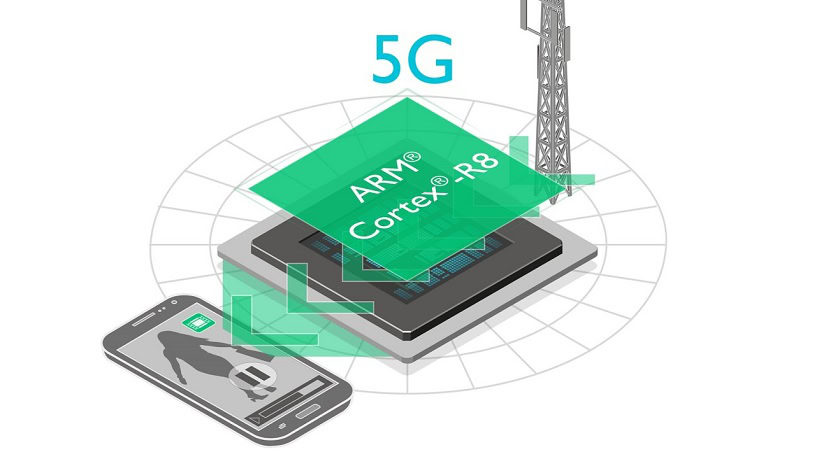
Today, ARM has unveiled details about its new Cortex-R8 processor. The processor is designed for real-time mass storage and modem solutions, boasting double the performance of previous designs. Before we delve any further into ARM’s latest announcement, let’s take a look at the technologies that are making increasingly high demands of modem processors.
Smart baseband modems
You may or not be aware that baseband modems in your smartphone have their own processors, which even run their own little operating systems. While not as complex as the Rich OS environments that we are used to dealing with, these Real Time Operating Systems (RTOS), which are usually just a few hundred kilobytes in size, are responsible for scheduling the incoming and outgoing data-flows from your carrier network and ensuring that radio data from a cell tower can be understood by your smartphone.
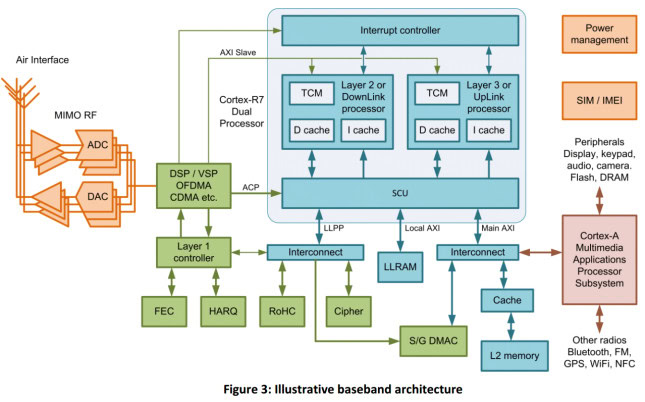
A baseband processor is really split into two parts – a modem to modulate and demodulate the radio signal which contains the data you’re after, and a low power processor to manage the communication between the base station and mobile terminal. Today’s smartphones handle a range of different cellular protocols, including GSM, HSPA+, and 4G LTE. All of which require processing power to interpret incoming data to make it useful and to generate packets for outgoing data.
A modem processor is responsible for interpreting and processing radio communications, interfacing with other pieces of modem hardware including DSP units and digital converters, and transmitting data to the main application processor inside your phone. Due to the high-speed nature of mobile communication, the processor must be able to respond almost instantaneously to “hard” real-time tasks, so these processor types are much more specialized that your typical smartphone CPU.
LTE-A Pro and the road to 5G
As wireless networking standards increase in speed and complexity, gadgets require more powerful hardware and software to interpret, process and generate network packets.
A simply way to view this is to think about throughput. If your network is pushing data through faster and faster, then your modem processor also has to become quicker at doing all of its usual tasks too. When we throw in new networking developments such as piecing data back together from and transmitting data to multiple LTE carriers (MIMO and carrier aggregation), and parallel processing, then we can appreciate that smartphone modems are becoming increasingly complex.
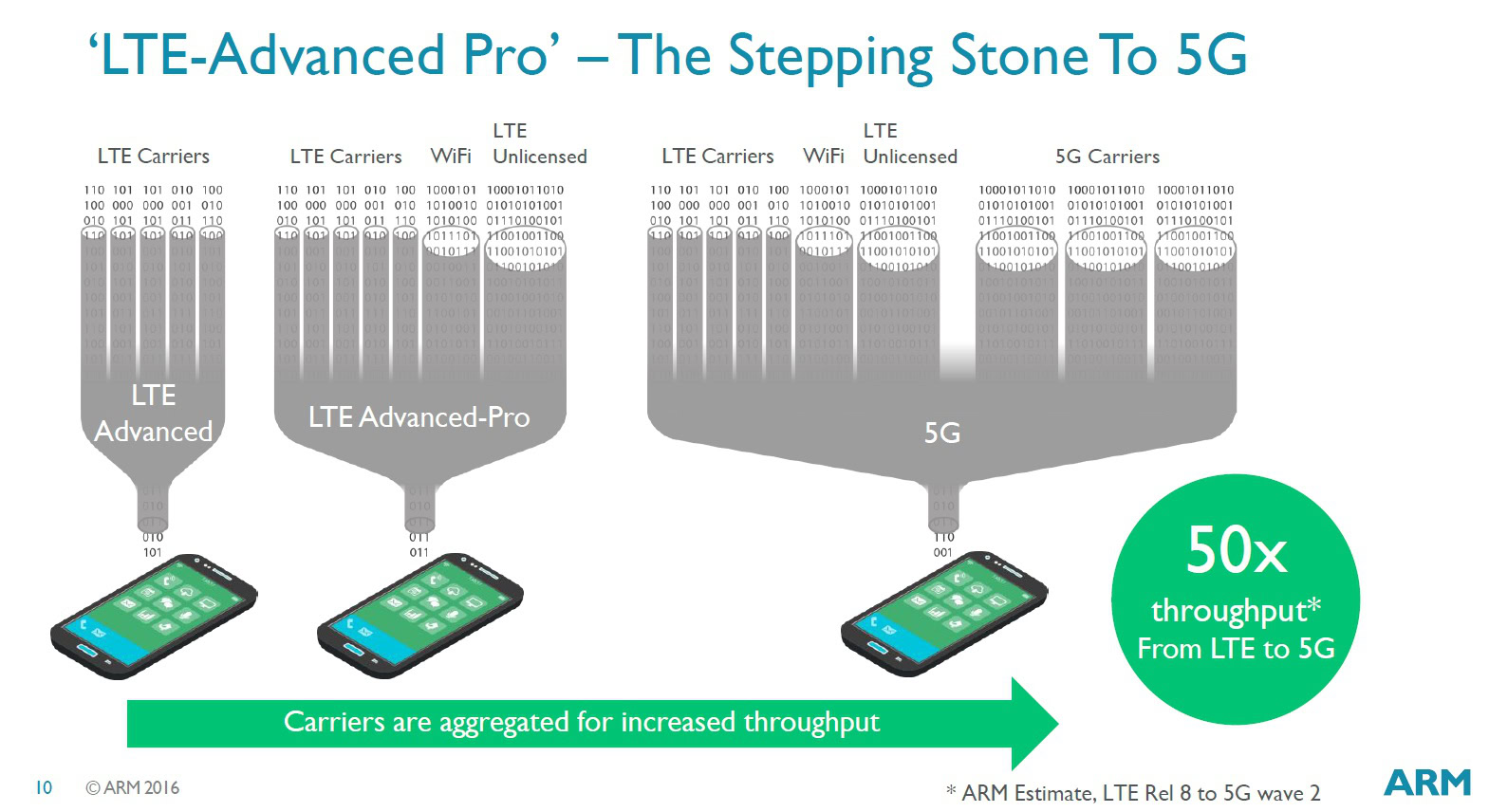
This situation will only be exacerbated with the introduction of LTE-Advanced Pro and the eventual roll out of 5G networks, which are looking to aggregate data from a wide range of network sources, greatly increasing the processing demands on baseband modems.
What has started with LTE carrier aggregation is set to grow to support WiFi and LTE Unlicensed spectrums with the introduction of LTE Advanced-Pro. The ultimate goal with 5G networks is to make use of LTE, 5G and WiFi bands in parallel at any given time, to produce a significant boost to throughput over today’s networks. Working with all these different protocols at once is a new challenge for baseband modem engineers.
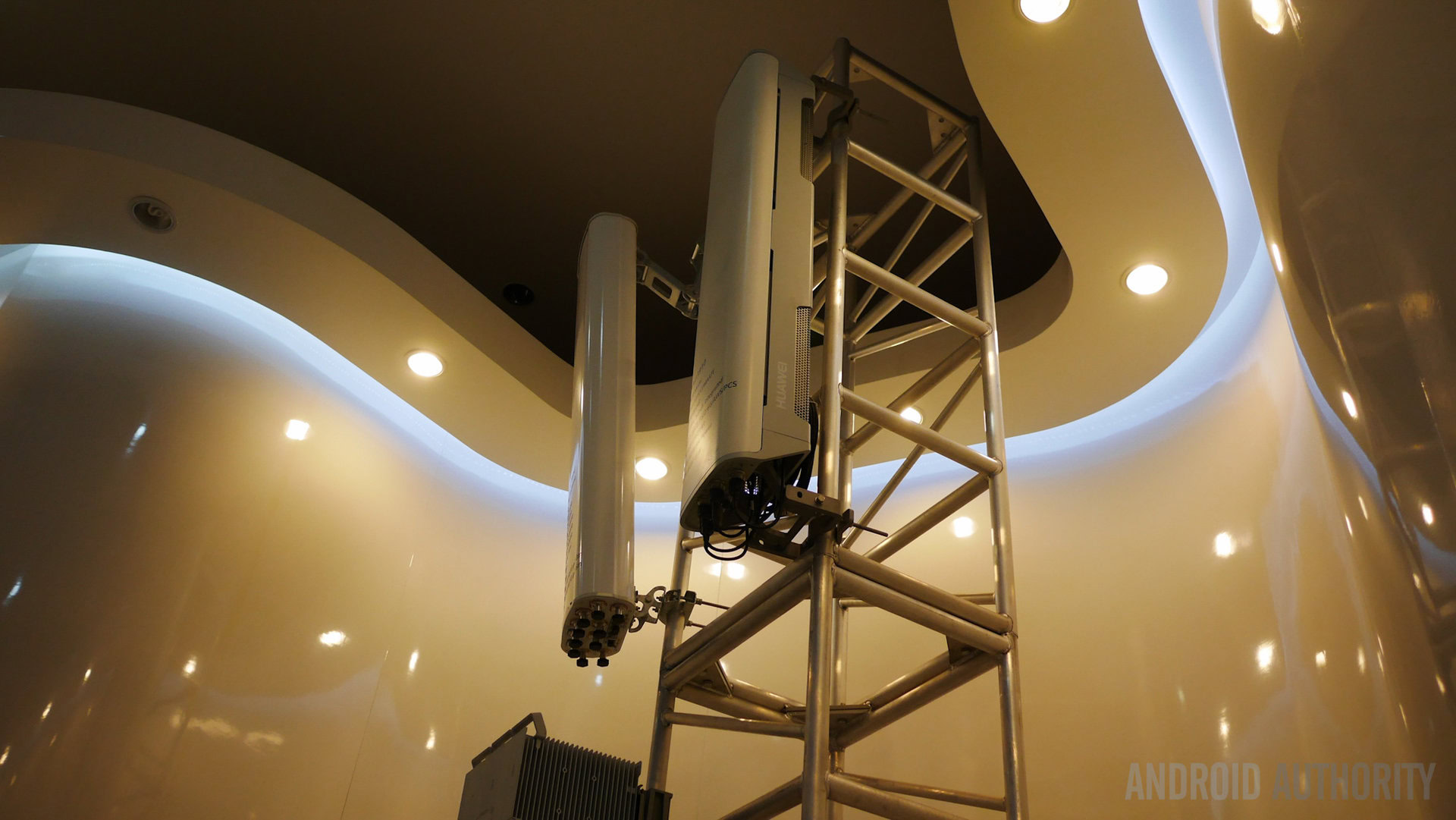
ARM Cortex-R8
Now that we understand the journey, we can see where ARM’s Cortex-R8 fits into the picture. ARM’s Cortex-R range fits in between its high performance Cortex-A application processors and its low power Cortex-M micro-controllers. This series is designed for specialized high performance real-time applications, rather than situations that require a Rich OS or very low power components.
The Cortex-R8 processor is a 32-bit core based on the ARMv7-R instruction set, with an 11-stage pipeline and superscalar out-of-order execution. The core can be clocked up to 1.5GHz on a 28nm HPM process. The Cortex-R8 can be scaled up from single to quad-core configurations, making it suitable for a range of uses depending on the peak performance required. The Cortex-R7 was limited to dual-core configurations. Each core can now be paired up with up to 2MB of tightly coupled memory (TCM) too, 1MB of instruction TCM and 1MB of data TCM.
“The Cortex-R8 is the most powerful real-time CPU available and its unrivalled performance will make it instrumental in the creation of 5G modems.” – James McNiven, general manager, CPU Group, ARM
Designs can boasts more than double the peak performance of the Cortex-R7, ARM’s previous performance leader in the Cortex-R series. ARM claims that its own testing has found that the Cortex-R8 provides enough performance for use in LTE-A Pro and 1st generation 5G modems. As well as 5G modems, ARM envisions the Cortex-R8 for use with low latency hard disk drives and solid state hard drives.
As always, power efficiency is something that ARM has been keeping an eye on. Multiple CPU core set-ups run asymmetrically and cores can be powered down individually. So while four cores may be required for streaming a video at high speed, a modem could drop down to just a single core while a phone idles in the pocket.
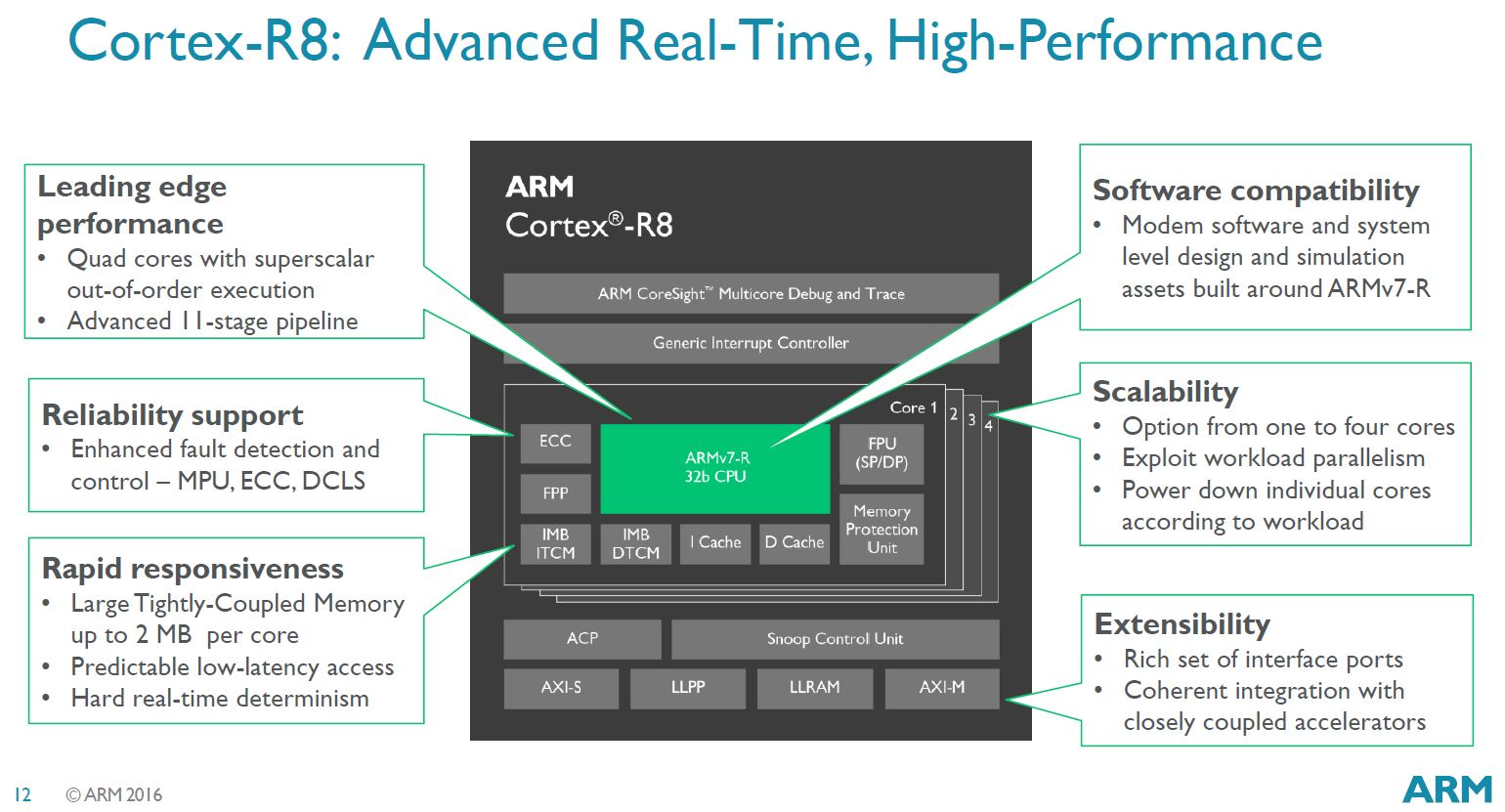
The Cortex-R8 is available for licensing immediately and is expected in silicon form later in 2016. Modem designs using Cortex-R8 processors will support the roll-out of LTE-Advanced Pro and 5G standards.